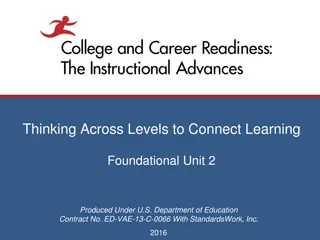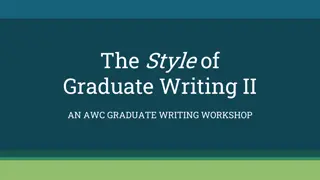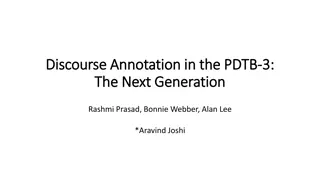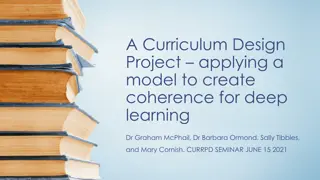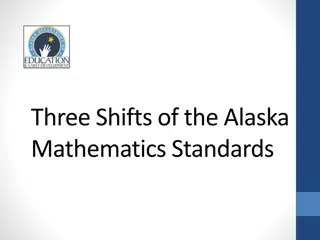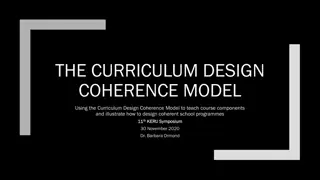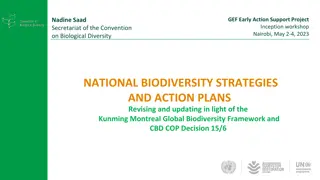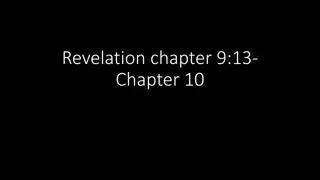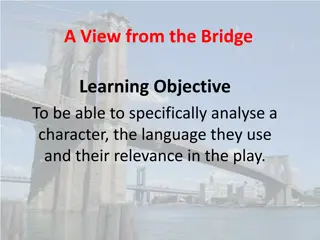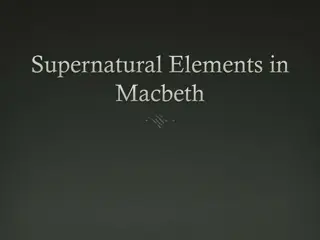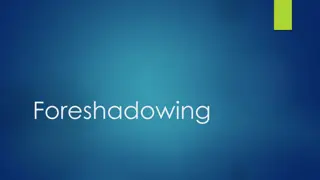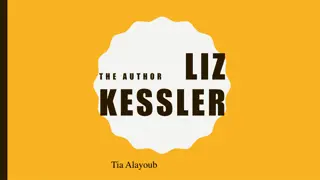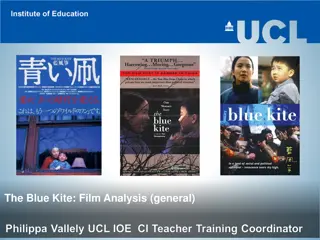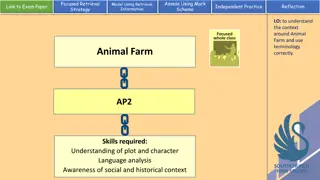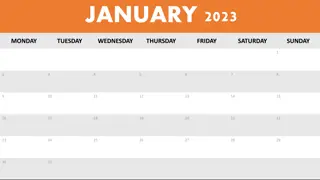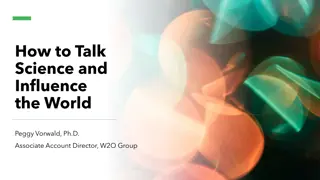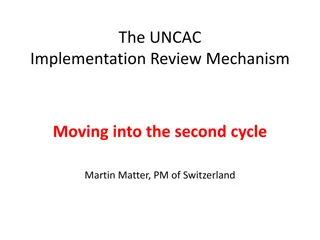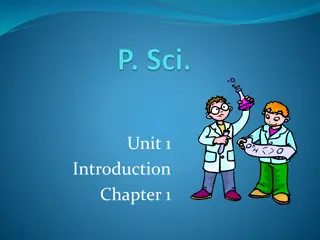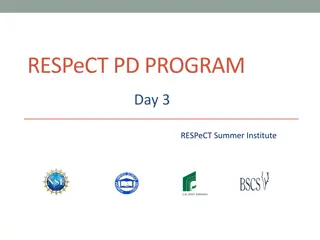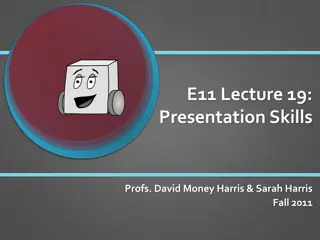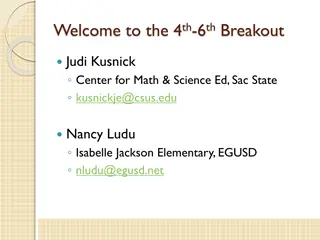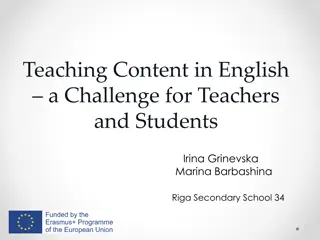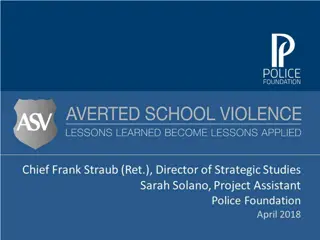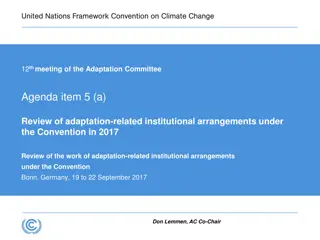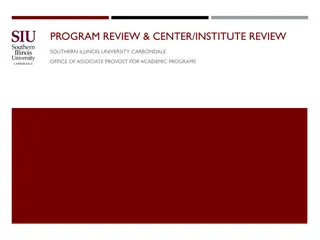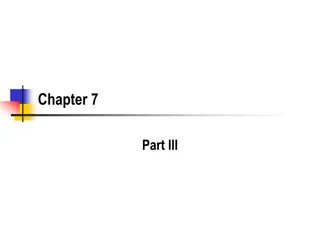Day 6 Review and Strategies for Science Content Storyline Coherence
Explore Day 6 of the RESPeCT Summer Institute focusing on reflections, lesson analysis, and deepening science content about the Sun's effect on climate. Discover strategies like STeLLA B, I, and 7 for developing coherent science storylines and enhancing student learning. Engage in discussions on lesson beginnings and endings, selecting appropriate activities, and key features of instructional strategies.
Download Presentation

Please find below an Image/Link to download the presentation.
The content on the website is provided AS IS for your information and personal use only. It may not be sold, licensed, or shared on other websites without obtaining consent from the author. Download presentation by click this link. If you encounter any issues during the download, it is possible that the publisher has removed the file from their server.
E N D
Presentation Transcript
RESPeCTPD PROGRAM Day 6 RESPeCT Summer Institute
Agenda for Day 6 Day-5 reflections Review: Science content storyline Today s focus questions Lesson analysis: STeLLA strategies B, I, and 7 Content deepening: The Sun s effect on climate Lunch Content deepening (continued) Lesson analysis: SCSL strategy C Summary, homework, and reflections
Trends in Reflections Lesson Analysis Science Content Learning
Review: Science Content Storyline In your notebooks, jot down 3 things you remember from yesterday s session, 2 ideas that seem important to you, and 1 question you have. Be prepared to share one idea and question with the group.
Todays Focus Questions How can we begin and end a lesson to help students develop a coherent science content storyline? How can selecting appropriate science activities help students develop a coherent science content storyline? Why are places closer to Earth s equator hotter than places farther away from the equator? Why is it summer in the United States (the Northern Hemisphere) when it s winter in Argentina (the Southern Hemisphere)? Why is it warmer in the summer than in the winter?
Lesson Analysis: Focus Question 1 How can we begin and end a lesson to help students develop a coherent science content storyline?
Strategies B, I, and 7: Purposes and Key Features Group 1: What are the purpose and key features of strategy B? Why is a focus question or goal statement important for science content storyline coherence? Group 2: What are the purpose and key features of strategy I? Why is summarizing key science ideas important for science content storyline coherence? Group 3: What are the purpose and key features of strategy 7? How does strategy 7 compare with strategy I? All groups: Make sure to cite ideas from the STeLLA strategies booklet in your answers.
Discussion Questions: Strategy B 1. What is the difference between focus questions and goal statements? 2. Which do you think would be more useful in engaging student interest and making their thinking visible focus questions or goal statements?
Discussion Questions: Strategies I and 7 1. What are various ways a lesson or unit can be synthesized and/or summarized? 2. How are strategies I and 7 similar and different? a. SCSL strategy I: Summarize key science ideas. b. STL strategy 7: Engage students in making connections by synthesizing and summarizing key science ideas.
Video-based Lesson Analysis Next we ll analyze a video clip from the beginning and end of a lesson on the Sun s effect on climate.
Lesson Analysis: Strategy B 1. In Analysis Guides B and I (handout 6.1), review the four criteria for strategy B: Setting the purpose. 2. Read the lesson context at the top of the video transcript (handout 6.2). 3. Watch the first video clip, keeping in mind the criteria for strategy B. 4. Analyze the transcript using the analysis guide. How well does the beginning of this lesson match the criteria for strategy B? 5. Share and compare your analyses. Link to video clip 1: 6.1-6.2_stella_SEC_crom_L2_c1-c2
Lesson Analysis: Strategy I 1. In Analysis Guides B and I (handout 6.1), review the six criteria for strategy I: Summarizing key science ideas. 2. Review the lesson context at the top of the video transcript (handout 6.2). 3. Watch the second video clip, keeping in mind the criteria for strategy I. 4. Analyze the transcript using the analysis guide. How well does the end of this lesson match the criteria for strategy I? 5. Share and compare your analyses. Link to video clip 2: 6.1-6.2_stella_SEC_crom_L2_c1-c2
The SEC Lesson Plans: Reading and Analysis 1. Examine the main learning goal, the lesson focus question, and the lesson summary for your assigned SEC lesson plan (parts A and B). 2. Answer these questions in your notebooks, keeping in mind the analysis-guide criteria for strategies B and I: What do you notice? What do you wonder about?
THE SUNS EFFECT ON CLIMATE SCIENCE CONTENT DEEPENING Grade 6
The Sun s Effect on Climate Content Deepening Developed by Dr. Jeff Marshall Geological Sciences Cal Poly Pomona Used by permission Photo courtesy of NASA
Unit Central Question Why are some places on Earth hotter than others at different times of the year?
The Suns Effect on Climate Lesson 2a Photo courtesy of NASA
Content Deepening: Focus Question 1 Why are places closer to Earth s equator hotter than places farther away from the equator?
Investigation 1: Angles of Light Energy The task: Investigate what happens when you shine a flashlight on a flat tray at different angles. Test two scenarios: 1. What happens when you hold the tray perpendicular to the light beam ( straight on )? 2. What happens when you tilt the tray away from the light beam (at an angle)? Instructions: 1. Before each scenario, tape a sheet of graph paper to the tray. 2. Move ONLY the tray! Keep the light beam parallel (horizontal) to the floor. Maintain the same distance between the flashlight and the tray at all times. 3. Using a pencil, trace the circular pattern of light (the brightest area) shining on the graph paper (for both scenarios).
Investigation 1: Angles of Light Energy Count the total number of squares within the circular light pattern you traced on each sheet of graph paper. In which scenario was the circle smaller? In which scenario was the circle larger? Imagine that the flashlight represents sunlight hitting Earth s surface. In which circle of light would it feel warmer the small circle or the large circle? Why? Be prepared to share your answer and reasoning.
Investigation 1: Angles of Light Energy Instructions: Examine the diagram showing parallel rays of sunlight approaching Earth. Note the relationship between these rays and the straight tangent lines at different points on Earth s curved surface. Using the flashlight, tray, and inflatable globe, work with your partner to simulate sunlight striking Earth at each of these points. Remember:Keep the light beam in a horizontal position and maintain the same distance between the flashlight and tray. Question: How does this model help explain the temperature patterns observed in lessons 1a and 1b?
The Suns Effect on Climate Lesson 2b Photo courtesy of NASA
Content Deepening: Focus Question 1 Why are places closer to Earth s equator hotter than places farther away from the equator?
Investigation 2: Counting Sun Rays In this diagram, the incoming rays of sunlight appear as narrow, densely spaced parallel lines. Work with your partner to count the number of lines that strike Earth s surface between the following latitudes and record the results on handout 6.3: 0 15o N 0 15o S Questions: What happens to the number of lines as we move farther away from the equator north and south? How does this diagram relate to the tray-and- flashlight model? 45 60o N 45 60o S
Reflect: Content Deepening Focus Question 1 Why are places closer to Earth s equator hotter than places farther away from the equator?
Key Science Ideas Rays of sunlight (solar radiation) approach Earth along parallel, straight-line paths and hit the curved surface at varying angles in different locations. When sunlight strikes Earth s surface more directly (straight on), heat energy is concentrated over a smaller area. When sunlight hits the surface less directly (at an angle), heat energy is spread out over a larger area. Locations closer to the equator (with more-direct sunlight) are hotter than places closer to the poles (with less-direct sunlight). The angle of sunlight hitting Earth s surface, NOT the distance from Earth to the Sun, determines global temperature patterns. The Earth-Sun distance is 10,000 times greater than Earth s diameter, so the distance between the Sun and any point on Earth s surface is essentially the same and has no effect on temperature patterns.
The Suns Effect on Climate Lesson 3a Photo courtesy of NASA
Content Deepening: Focus Question 2 Why is it summer in the United States (the Northern Hemisphere) when it s winter in Argentina (the Southern Hemisphere)?
Investigation 3: Earths Orbit around the Sun What do these materials represent? Lightbulb Styrofoam ball Rubber band Hula Hoop Wooden stick
Investigation 3: Earths Orbit around the Sun Instructions: 1. Turn on the light setup and place it in the middle of the Hula Hoop on the table. 2. Place the rubber band around the middle of the Styrofoam ball. 3. Insert the wooden stick through the center of the ball and place the ball on the wooden stand to approximate Earth s tilt. 4. Place the light setup on a stack of books so it s in the same horizontal plane as the ball. 5. Position the Styrofoam ball (in the stand) next to the Hula Hoop and move it around the lightbulb to simulate Earth s yearly orbit around the Sun.
Investigation 3: Earths Orbit around the Sun 1. Insert pushpins in each hemisphere of the model to show where the United States and Argentina are located. 2. Place your Earth-Sun model in position 1 to represent summer in the United States (Northern Hemisphere). Why does this position represent summer in this hemisphere? What happens as the light hits this hemisphere? What happens in the other hemisphere? 3. Place your model in position 3 to represent summer in Argentina (Southern Hemisphere) and answer the same questions. 4. Compare positions 1 and 3 in Earth s orbital pattern. Where are they located relative to each other?
The Suns Effect on Climate Lesson 3b Photo courtesy of NASA
Content Deepening: Focus Question 2 Why is it summer in the United States (the Northern Hemisphere) when it s winter in Argentina (the Southern Hemisphere)?
Investigation 4: Earths Tilt and Seasons Another important component of our Earth-Sun model is the North Star (Polaris). During Earth s yearly orbit around the Sun, Earth s axis always points toward this star. So the Northern Hemisphere tilts toward the Sun (position 1) part of the year, and the Southern Hemisphere tilts toward the Sun (position 3) the other part of the year. Using the handout diagram and the North Star on the wall as a guide, move your Earth-Sun model around the Hula Hoop to simulate Earth s orbit. Stop at each of the four orbital positions and answer these questions: 1. What is happening to the light in this position? 2. What season is each hemisphere experiencing in this position?
Reflect: Content Deepening Focus Question 2 Why is it summer in the United States (the Northern Hemisphere) when it s winter in Argentina (the Southern Hemisphere)?
Key Science Ideas Earth s axis always points toward the North Star (Polaris) during Earth s yearly orbit around the Sun. So the Northern Hemisphere tilts toward the Sun (position 1) part of the year, and the Southern Hemisphere tilts toward the Sun (position 3) the other part of the year. The hemisphere tilting toward the Sun experiences more-direct sunlight, longer days, and warmer temperatures (summer), while the opposite hemisphere experiences less-direct sunlight, shorter days, and colder temperatures (winter). Spring and fall occur when the hemispheres are tilting neither toward nor away from the Sun (positions 2 and 4 of Earth s orbit).
The Suns Effect on Climate Lesson 4a Photo courtesy of NASA
Content Deepening: Focus Question 3 Why is it warmer in the summer than in the winter?
Investigation 5: Winter versus Summer Work with your partner to count the incoming rays of sunlight on each diagram at the latitudes indicated on the data table (handout 6.4). First, count the number of lines at the specified latitudes on the diagram showing Earth in position 1 (handout 4.2) and record this data in the corresponding column on the data table. Then count the number of lines at the specified latitudes on the diagram showing Earth in position 3 (handout 4.3) and record this data in the corresponding column on the data table. Question: How does this numerical data confirm your observations from the Earth-Sun-model investigations?
The Suns Effect on Climate Lesson 4b Photo courtesy of NASA
Content Deepening: Focus Question 3 Why is it warmer in the summer than in the winter?



